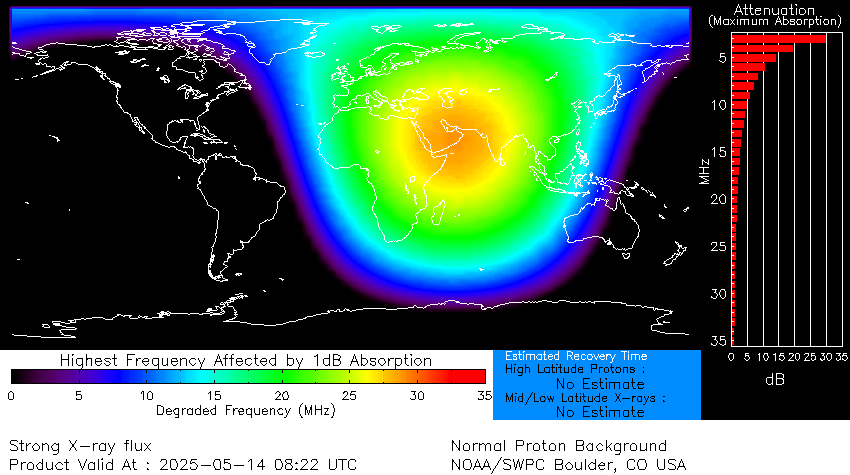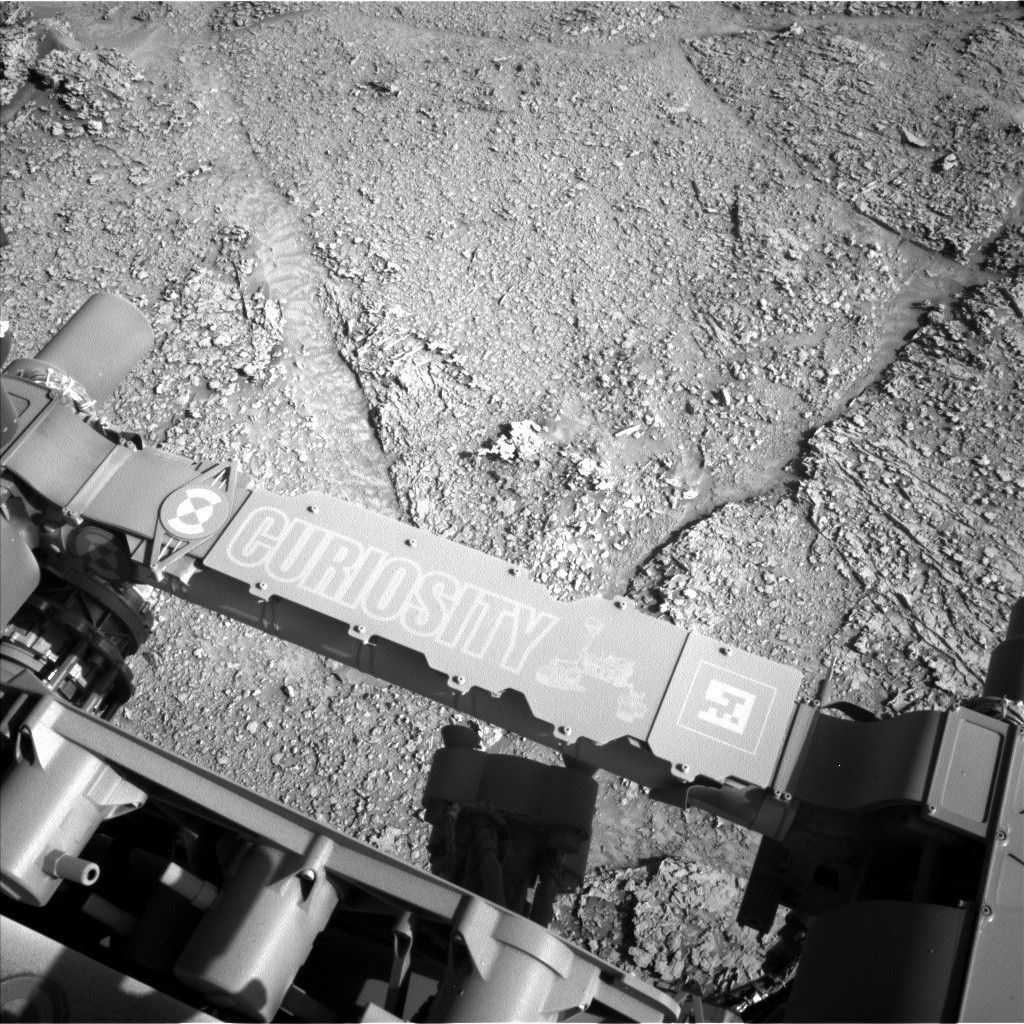Four eclipses will occur this year, two of the moon and two of the sun. The first of these will take place during the early hours of Wednesday (May 26) when the full moon becomes completely immersed in Earth’s dark umbral shadow, producing the first total lunar eclipse since January 2019.
Unfortunately, those who live in the eastern third of the United States will see little or nothing of this event, because when the visual show begins to get underway, the moon will either be approaching its setting or will have already set. Those who live in the central and especially the far-western states have the advantage of seeing at least the first half of the eclipse, if not most of it, before moonset. Along a slice of the U.S. Pacific Coast, as well as the southern and western parts of Alaska and all of Hawaii, the umbral phase of the eclipse will be visible from start to finish.
For this month’s lunar eclipse, the moon will be completely in the Earth’s dark umbra for a tantalizingly short length of time: 14 minutes and 31 seconds. The moon will slip through the northernmost part of the shadow.
Super Flower Blood Moon 2021: When and how to see the supermoon lunar eclipse

The fraction of the lunar disk immersed in the umbra is described by the “geometrical magnitude” at mid-totality, which for this eclipse will be 1.0095 moon diameters. This is the distance from the limb of the moon closest to the shadow center across the moon to the edge of the umbra. Put another way, the moon’s northern limb will be tucked a mere 20 miles (32 kilometers) inside the umbra at the moment of greatest eclipse, which occurs at 1118 GMT. This also means that totality will likely be relatively bright, because the moon’s upper limb will be closest to the outer edge of the Earth’s dark umbral shadow.
Below we provide a timetable for the principal stages of the lunar eclipse for five time zones. N.A. (“Not Available”) refers to when the moon has set and that particular stage is not visible. From Hawaii, the opening stages of the eclipse occur prior to midnight, on late Tuesday evening (May 25).
Lunar eclipses: What are they, and when is the next one?
| Time Zone: | EDT | CDT | MDT | PDT | HDT |
|---|---|---|---|---|---|
| Moon enters penumbra | 4:47 a.m. | 3:47 a.m. | 2:47 a.m. | 1:47 a.m. | 10:47 p.m. |
| Moon enters umbra | 5:44 a.m. | 4:44 a.m. | 3:44 a.m. | 2:44 a.m. | 11:44 p.m. |
| Total eclipse begins | N/A | 6:11 a.m. | 5:11 a.m. | 4:11 a.m. | 1:11 a.m. |
| Middle of the eclipse | N/A | 6:18 a.m. | 5:18 a.m. | 4:18 a.m. | 1:18 a.m. |
| Total eclipse ends | N/A | 6:25 a.m. | 5:25 a.m. | 4:25 a.m. | 1:25 a.m. |
| Moon leaves umbra | N/A | N/A | N/A | 5:52 a.m. | 2:52 a.m. |
| Moon leaves penumbra | N/A | N/A | N/A | N/A | 3:49 a.m. |
Being large and close is a drawback!
Many online sites are playing up the fact that this particular full moon will also be a “supermoon” — that is, a full moon that more or less coincides with its arrival at the perigee (closest point) in its orbit around Earth. The moon will arrive at perigee at 0155 GMT on May 26 and officially turns full 9 hours and 19 minutes later. At that moment, its distance from Earth will be 222,124 miles (357,474 km), resulting in the largest full moon in apparent size in 2021 — about 7.7% larger than normal.
However, be aware that such a situation actually ends up shortening the duration of totality. For lunar eclipses that occur during late spring and early summer, the diameter of the Earth’s dark umbral shadow is about 12% smaller compared to late fall and early winter. So, a larger-than-normal moon transiting a smaller-than-normal umbral shadow will end up being totally eclipsed for a shorter period of time. In addition, when it’s near perigee, the moon is moving a bit faster than normal, again shortening the time it will spend completely immersed in Earth’s shadow.
These two factors, combined with the fact that the moon is barely skimming just within the northernmost part of the umbra, are the main reasons why this eclipse — ballyhooed by many because of the moon’s large apparent size — will have such a short duration of totality.
Related: How the ‘supermoon’ looks (infographic)
A strange moonset
An interesting observation to attempt is to try and see the partially eclipsed setting moon and the rising sun simultaneously. While such a sun-Earth-moon alignment would seem to make this observation impossible, remember that the images of both sun and moon are apparently “lifted” above the horizon, thanks to refraction by Earth’s atmosphere. This allows us to see the moon for several extra minutes after it has set and the sun for several extra minutes before it actually rises.
Observers across the central and eastern United States and Canada should pay particular attention to the full moon at or shortly before sunrise early on Wednesday morning, for as we noted earlier for this part of the country, the eclipse will just be starting when the moon sets, putting an abrupt end to this shady little drama. For North Americans, the farther west you go the better the view; as the sun rises in the east-northeast, the moon will be going down on the opposite side of the sky in the west-southwest.
The moon will still appear to be “full” as it sets for eastern sections of New York and Pennsylvania as well as for all of New Jersey, though sharp-eyed observers might be able to detect a faint penumbral “stain” on the moon’s left limb if their west-southwest horizon is haze-free. To some, it might look like the famous “man in the moon” has a bruise on the left side of his face above his chin.
Related: Watch a meteor smack the blood moon in this lunar eclipse video!
Take a bite!
From west-central New York State through east-central Pennsylvania and the Delmarva Peninsula, the start of the partial stages closely coincides with moonset; you might notice a small “bite” taken out of the moon at about the 9 o’clock position on the moon’s disk.
For the Great Lakes and Ohio Valley down through the Carolinas, about one-quarter to one-half of the setting moon will already be immersed in the umbra; the shadow will appear to creep from left to right across the moon.
Have a slice
Across the eastern Dakotas heading southeast to Missouri and continuing down to the Alabama/Florida Gulf Coast, only a slice of the right side of the moon will be in view as it drops below the west-southwest horizon. Farther to the west, the moon will set completely immersed in Earth’s shadow.
Depending on the clarity of your sky, however, you might only get to keep the narrowing moon in view to within about 15 minutes of local sunrise, since the dawn twilight sky is rapidly brightening. For it to still remain visible, the moon will also need to remain just high enough above any low-lying horizon haze.
And keep in mind that this holds only for the uneclipsed portion of the moon.
Total (with difficulty)
The moon will set in total eclipse across a roughly 200-mile (320 km) corridor that will encompass eastern Montana, the western Dakotas and down through central Kansas to the Texas/Louisiana Gulf Coast.
Indeed, if the moon is totally eclipsed at moonset from where you live, you’ll probably have to carefully scan the west-southwest horizon with binoculars in order to possibly detect the moon, which will somewhat resemble a dim, sooty and eerily illuminated mottled softball.
Uncharacteristic phase
Across the northern and central Rockies down into central Texas, the moon’s emergence from the umbra somewhat later will be the main spectacle. The low, partially eclipsed moon in deep blue twilight should offer a wide variety of interesting scenic possibilities for those attempting a photograph accompanied with a nearby landmark in the foreground; it will be a peculiar looking crescent moon with its cusps pointing downward while descending toward the west-southwest horizon.
Farther west, across the intermountain region, desert Southwest and Pacific Northwest, the moon will appear to be notched on its lower portion by the umbral shadow. For places west (left) of a line running from roughly Lincoln City, Oregon to Los Angeles, the moon will have completely exited the umbra before moonset.
Coming attractions
The next lunar eclipse after Wednesday’s will occur on Nov. 19. That one will be another early morning event, but this time it will favor all of North America.
The November event will be an “almost total” eclipse, with more than 97% of the moon’s diameter immersed in the umbra at greatest eclipse. Next year, on the night of May 15-16, another total eclipse will take place. For those living in the eastern U.S., the eclipse will take place during the overnight hours, while out in the far west the eclipse will already be in progress as the moon rises.
Joe Rao serves as an instructor and guest lecturer at New York’s Hayden Planetarium. He writes about astronomy for Natural History magazine, the Farmers’ Almanac and other publications. Follow us on Twitter @Spacedotcom and on Facebook.


